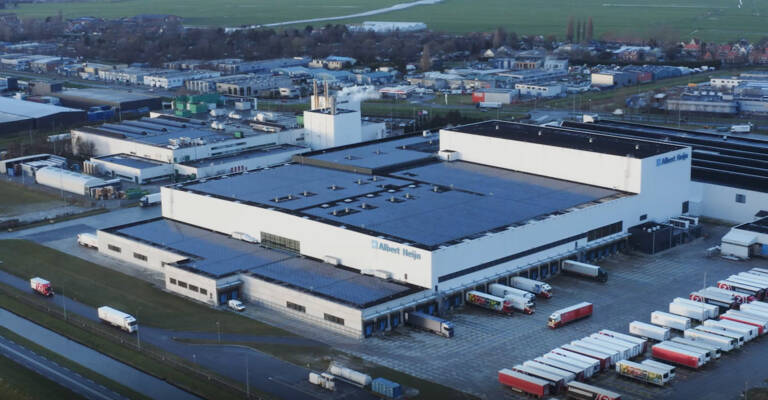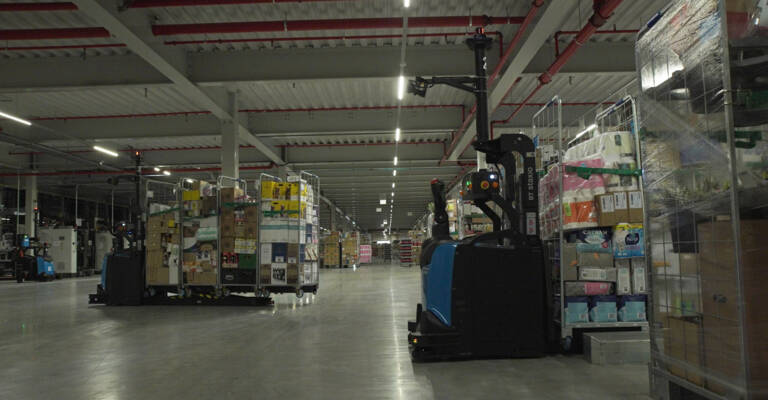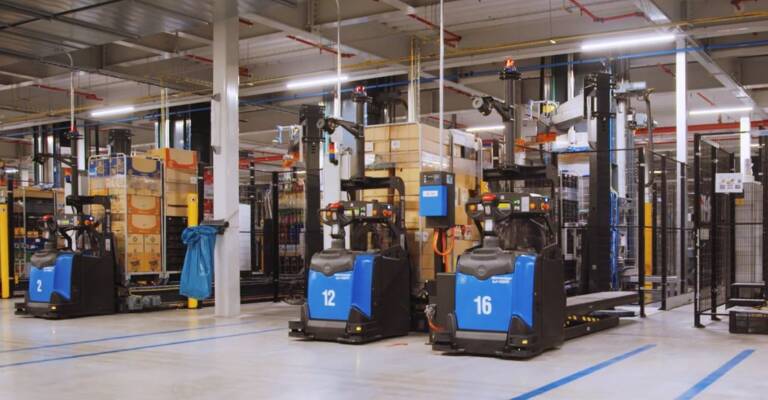
Large Toyota AGV fleet helps future-proof Albert Heijn’s DC

Facts and numbers
Company: Albert Heijn
Location: Zaandam, Netherlands
Sector: Mechanised distribution centre / retail
Solutions: 48 automated pallet trucks, 9 automated stackers
About Albert Heijn
Albert Heijn is the largest supermarket chain in the Netherlands and has been a staple of the Dutch high street for over 130 years. Today, Albert Heijn operates almost 900 supermarkets in the Netherlands, with 6 different distribution centres strategically positioned throughout the country. The distribution centre in Zaandam is Albert Heijn's most mechanised distribution centre. It supplies more than 300 stores twice a day with fresh and perishable products and processes 1.7 million packages every week. Close teamwork with different partners was key to futureproofing the distribution centre and streamlining logistics processes.
Transport solution from inbound to outbound
Albert Heijn chose automated guided vehicles to transport pallets throughout the distribution centre. The more AGVs in operation, the more stores could be supplied. For the best solution, the company turned to Toyota Material Handling, with whom they already have a long-term relationship.
”We were looking for a reliable and professional AGV partner to work on this big project,” explains Jeanne Sas, Operation Site Manager at Albert Heijn. Today, 57 Autopilots from Toyota are operating in the new distribution centre, taking care of goods transportation in the inbound and outbound areas. “The Toyota team has shown eye for detail, and passion for their work and reliability,” continues Jeanne. “Great teamwork led to a result we can all be proud of.”

Finding the best scenario – turning complexity into efficiency
“What makes this project so unique is that there are relatively few logistics flows. There is transportation from the inbound to the buffer, and from the buffer to the outbound. But because there are so many vehicles involved and the surface area is so large, it is a hugely complex project,” says Paul van Veldhuizen, Manager of Logistics Automation at Toyota.
Due to the complexity, the project was started with a feasibility study carried out by an external partner. A detailed plan of the logistics system was tested in a simulation. This research showed whether the capacity was feasible and how many AGVs were required. Based on this, the final design was realised. Another advantage of this method was that further improvements could also be tested later in the installation phase and implemented immediately if the result showed positive.

Challenges overcome by intelligent software
Intelligent software is indispensable because of the unique circumstances of this project. For example, the AGVs must be able to handle different load carriers on wheels, which is more complex than handling pallets. Software also must determine the most efficient route, and which tasks the AGVs must perform.
Supporting 24/7 operation
All AGVs are equipped with the latest lithium-ion batteries, assembled by Toyota. To ensure that the AGVs continue to run, the entire logistics system is equipped with charging points. As soon as the AGV does not have to perform any activities, it automatically drives to an available station to recharge.
